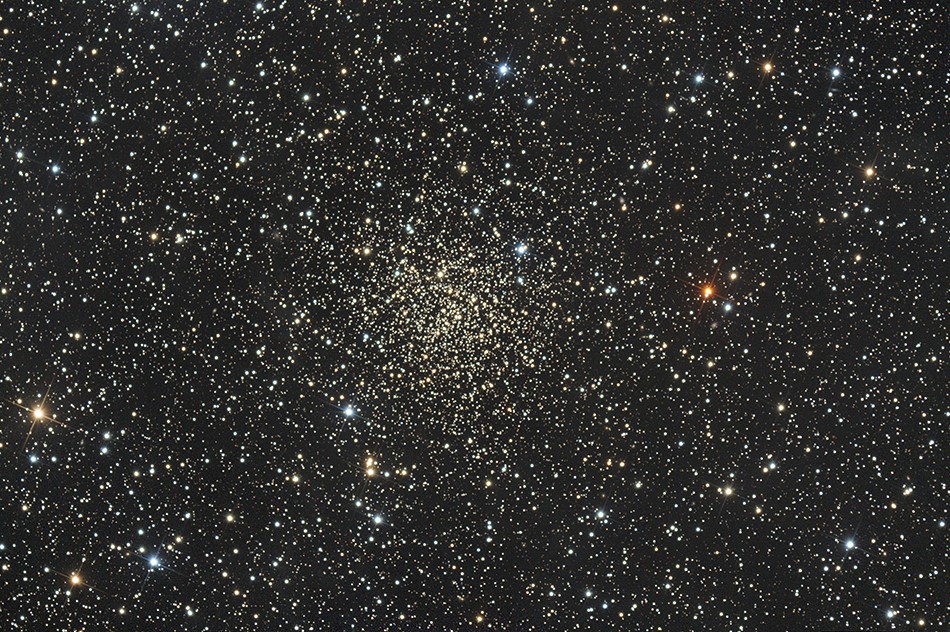

| Object name: | Constellation: | Coordinates: | Apparent size: | Visual brightness: |
|---|---|---|---|---|
| NGC 6791 | Lyra | 19h21m / +37°46' | 16' | 9.5 mag |
The open star cluster NGC 6791 in the constellation Lyra. NGC 6791 is one of the oldest and most metal-rich clusters in the Milky Way. While globular clusters usually are old groups of stars tightly bound to each other and lacking in elements heavier than helium (which scientists refer to as "metals"), open star clusters are much younger, more loosely bound and more metal-rich. NGC 6791, being both old and metal-rich, however, doesn't fit into this scheme. It shares characteristics of both types of clusters. The reason that old clusters tend to be more metal-poor than young ones is simple: Elements heavier than helium are made through nuclear fusion inside stars, many of them massive and relatively short-lived. When these stars explode in supernova events, they eject their metal-rich elements out into space. These stellar remains then become the raw materials for future generations of stars, which as a result incorporate more metals into their burning bodies. So old stars, and old clusters, should be relatively metal-poor, because they formed before space was enriched with metals. Compounded with the fact that it has an unusually high population of stars, NGC 6791 is among the most studied clusters in the sky. NGC 6791 is roughly 8 billion years old, 13,000 light-years from Earth and was discovered by German astronomer Friedrich August Theodor Winnecke in 1853 (source: Wikipedia / www.space.com, "Strange Star Cluster in a Class of Its Own", June 07, 2011).
Fifty-five 3-minute exposures (165 minutes total exposure) at gain 100 taken on August 14 / 15, 2021 and on September 4 / 5, 2021, were added for this shot with the Astro Pixel Processor (APP) software and the final image processing was done in Photoshop. Darks, flats and darkflats were used.
Equipment: Cooled ASI 2600MC Pro camera, TeleVue Paracorr Type II coma corrector, 16" f/4.5 "Ninja" dobsonian telescope riding on a dual-axis Tom Osypowski equatorial platform, Lacerta MGEN autoguider, Lacerta off axis system.
